A Wine Decoded Winemaker Session with Jeff Chilcott of Marchesi di Gresy
The Martinenga Cru ~ Monopole is the Jewell in Marchesi di Gresy’s Crown!
Martinenga sits in the Barbaresco Dress Circle between Asili & Rabajà.
Where Asili & Rabajà are both shared with 10-12 makers, Martinenga is a monopole.
With only one maker marketing Martinenga it flies under the radar in some markets, like Australia.
My first taste of Martinenga was of the 2016 vintage straight off the boat. Whilst the wines were a little shut down, they still gave me more than an inkling of the potential.
The ultimate test for Marchesi di Gresy came in January 2025.
Jeff Chilcott made a pitstop at Wine Decoded HQ on his way back to Barbaresco & Marchesi di Gresy, his home for over 30 years.
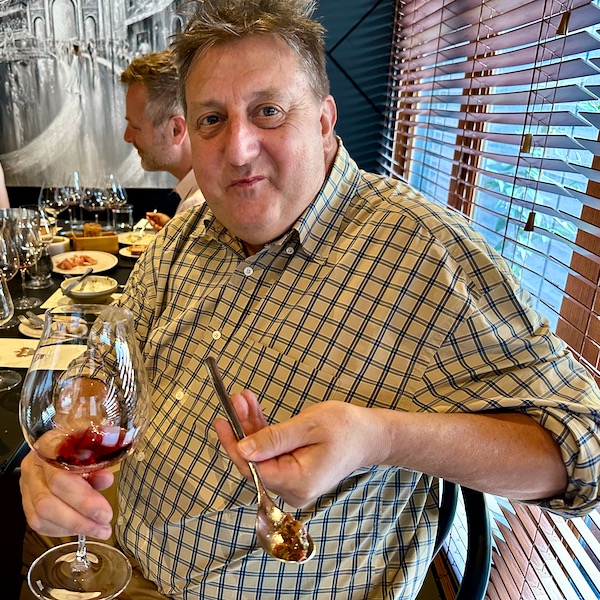
Along with being a great guy, Jeff is a big part of a team making some of the most individual Nebbiolos in Barbaresco.
Tasting a range of wines from 2013 to 2021 in one sitting highlighted just how high the base level quality is across the range from Marchesi di Gresy.
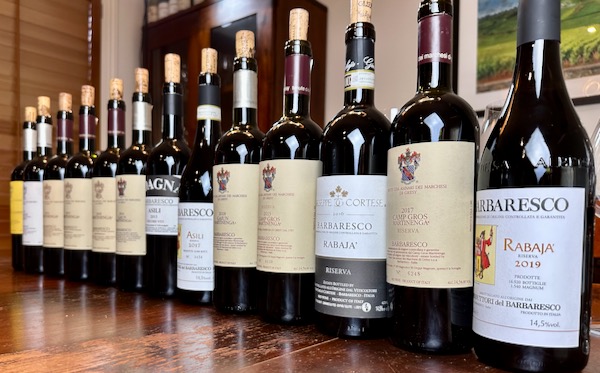
The take home messages
- All of the wines from 2023 back to 2013 across a dozen bottles were in fantastic condition. This is no mean feat. When you taste as much as I do you see crazy variability year on year from wineries at the pointy end.
- The high base level quality across all vintages demonstrates the skill level in the vineyard and winery.
- The élévage across the range shows a deft touch and the deep thought that is needed to achieve such harmony.
- Such consistency and quality gives you confidence to buy and cellar.
The most important message, what was in the glass! Jeff and the Marchesi di Gresy crew are making incredibly sophisticated wines full of personality.
The wines ticked all the boxes and shone next to wines from Produttori del Barbaresco, Cortese & Roagna.
Marchesi di Gresy’s wines meet you with intoxicating perfumes, seamless elegance and refined textures.
They are creatures of beauty!
In the interview below Jeff and I explore the wines of Marchesi di Gresy peppered with discussions of the rich history of Piedmont & the world of wine.
Check out all of the wines by Marchesi di Gresy!
About Marchesi di Grésy
The Martinenga Cru of Barbaresco, a monopole. is not only Marchesi di Grésy’s most famed vineyards it is one of Barbarescos too.
This is an unusual Monopole (single vineyard with just one owner) due to its size, quality and position.
The size, it’s large 12 Ha including a little space for the winery, house and now some pretty flash accommodation. It’s large enough that Marchesi di Grésy has identified two Lieux Dits, Gaiun and Camp Gros, bottling these separately from the Cru Martinenga Barbaresco.
The quality, proof is in the glass, the fruit quality and grape tannins in Marchese di Gresy’s Matinenga Nebbiolos are irrefutable.
The position, explains the quality, it’s right between Asili and Rabajà!
Where Rabajà and Asili are made by many different makers, with just one making Martinenga only those in the know are aware of just how impressive these wines are.
Consider yourself informed!
The wines of the Marchesi di Gresy are some of the most beautiful you will experience. The Nebbiolo of their famed Monopole Martinenga, produces wines of incredible colour, perfumes, intensity and elegance. I have been tasting there for over 25 years and have deeply, and even a little jealously, admired these wines. You can only imagine my response when, after more than two decades of tasting visits, Alessandro di Gresy asked me if I would represent their interests in Australia (and yes, I did say “Il Papa e Catolicco?” or vernacular to that effect).
The di Gresy family have been in Barbaresco for centuries. They record taking ownership of the Monte Aribaldo property in Treiso comune in 1650 and in 1797 they were gifted Martinenga itself, site of the first Roman settlement in the area, known then as Villa Martis.
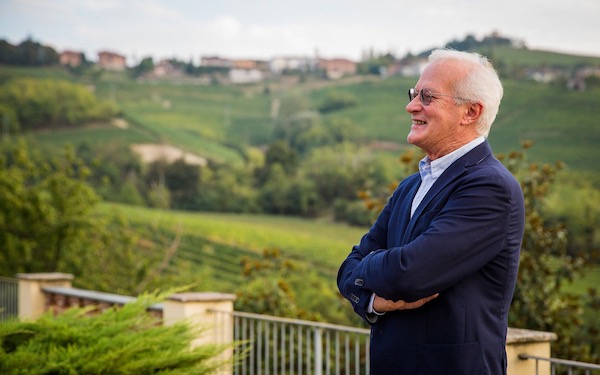
Over the years I’ve often ordered a Marchesi di Gresy Barbaresco at restaurants in the general area (including Barolo), even if I am with people who came from, or I wanted them to be impressed by, my allied producers – the guys we essentially came to see. For while a Martinenga is the equal of any Barbaresco, even of the fellow Grands Cru I so adore, Rabaja and Asili, it is quite different, quite particular in a number of a ways and I just love this particular expression of perfumes, layering and finesse in Nebb.
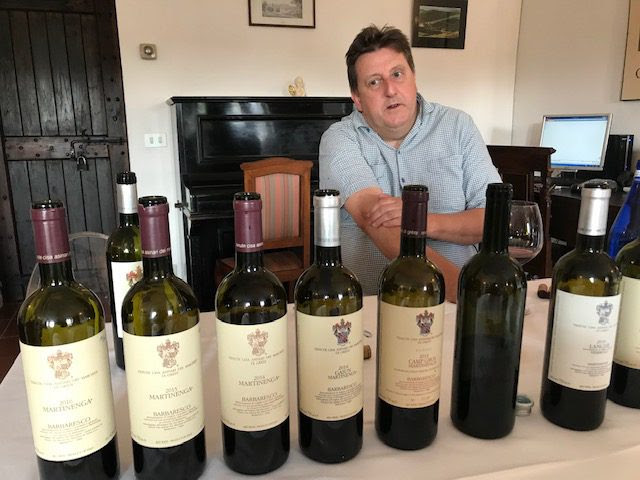
In their seminal book ‘Italy’s Noble Red Wines’ (1985) – a must-have text – Sheldon and Pauline Wasserman rated Martinenga as the greatest of Barbaresco vineyards, one step higher even than Rabaja and Asili, or the Santo Stefano of Albesani. This was based mainly on their summary or survey at the time, of the opinions of local experts and producers, rather than anything official or codified. In fact this repute would have partly been based on wines made by others, as it wasn’t until 1973 that Alberto di Gresy started to vinify Martinenga for themselves. In 1971 eg, he sold his grapes to the Ceretto brothers and in 1967 Produttori del Barbaresco made the quite celebrated Barbaresco Riserva Speciale Martinenga. Before long and rightly, Martinenga was joined by Asili and Rabaja in the top division.
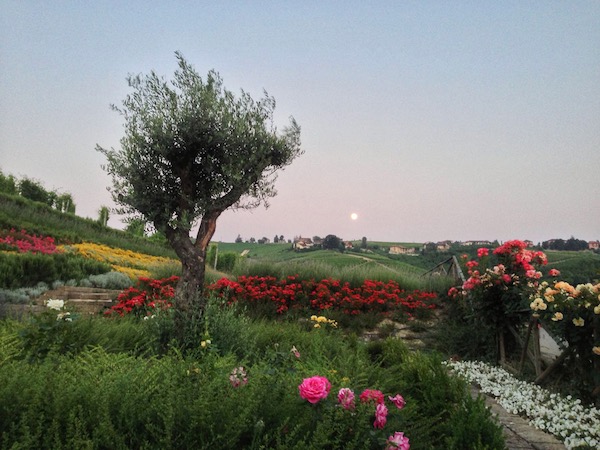
From the outskirts of Barbaresco township you can look down onto the magical natural amphitheater of 12 ha of Martinenga. The soil here is the classic Tortonian blue-grey limestone marl that constitutes most of the Barbaresco zone. A beautiful companion garden adds a lovely touch, which is aesthetic, but really intended for encouraging bio-diversity and the activity of insects, especially of pollinating bees. While there is bit of Barbera, Cabernet, Chardonnay and Sauvignon planted, the main game is Nebbiolo, which provides all the material for the beautiful Langhe Nebbiolo and for the three separate Barbaresco bottlings. It is the two famous sub-plots at opposite ends of the Martinenga property, each of which adjoin one of the other of the two acknowledged Grands Cru, that make this the heartland of Barbaresco. You’ll see from the little map above, that the Martinenga sub-plot of Gaiun adjoins the great Asili and sub-plot Camp Gros rolls into Rabaja. While I would add the Santo Stefano sub-plot (lieux dit in French) of Albesani (Neive) and others would propose nearby Paje and Rio Sordo, the three recognised (albeit unofficial) Grands Cru each produce wines that underline the equal status of Barbaresco with Barolo. Any day. The fascinating and clearly different, yet of course related natures and personalities of Martinega Gauin and Martinenga Camp Gros (always released as Riserva), are explored more in notes and attached reviews, but suffice to say they each echo their respective neighbours, Asili and Rabaja in both aromatics and feel.
David Ridge
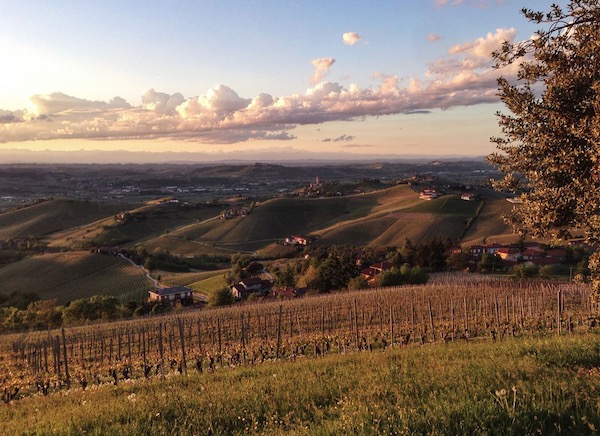
In the Vineyard
Martinenga is home to the only experimental vineyard for the clonal selection of Nebbiolo in the Barbaresco area. Eleven different clones on an area of 2.600 square meters are constantly monitored by our team, in cooperation with agronomists and enologists of the National Research Council (CNR), to understand the many secrets these grapes still have to reveal, and how different clones respond to climate change.
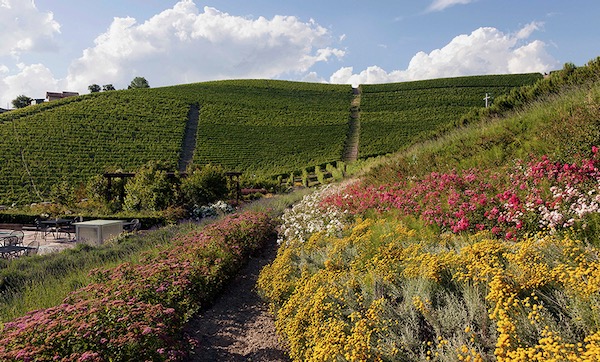
On the terrace above the cellar, and around the winery, we chose to plant a big aromatic garden, a natural oasis with ethic as well as aesthetic purposes.
Other than providing a beautiful place to taste our wines surrounded by the Martinenga amphitheatre, the garden helps preserve the microclimate and biodiversity through the proliferation of precious insects, like honeybees, that help pollination and keep harmful parasites away from the vines.
In the Winery
Winemaking at Marchesi di Gresy has remained essentially unchanged, apart from new oak being dialled right back, since vinification started here from 1973. While Langhe Nebbiolo now contains a little fruit from Rio Sordo and Marcarini Crus, it is still a shorter ferment/maceration job of 5-7 days, and cement until bottling and has the typical fragrant and zingy Martinenga personality. The 3 Martinenga Barbaresco wines use around 25% new oak, and of various types along with varying splits of time between barrique and botti. Ferments for the Barbaresco are around 10 days under floating cap and another 30 days maceration with submerged cap. All in all, the maxim here has been to let the location talk through the medium of Nebbiolo. It works for me!
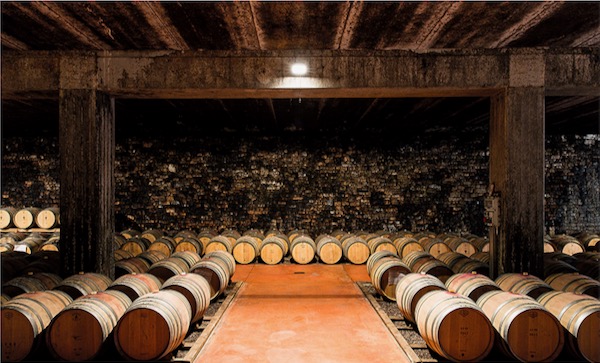
To minimize the environmental impact on the surrounding hills, our cellar has been built entirely underground.
This way we were able to reduce soil consumption, while taking advantage of the natural insulation and hygroscopicity of the ground, in order to have the ideal conditions for wine aging with no need for energy.
Where in the World is Marchesi di Grésy?
Marchesi di Grésy is based in Barbaresco with their home site the monopole of the ‘Martinenga’ Cru. Sandwiched between Rabajà and Asili it is part of Barbaresco’s royalty.
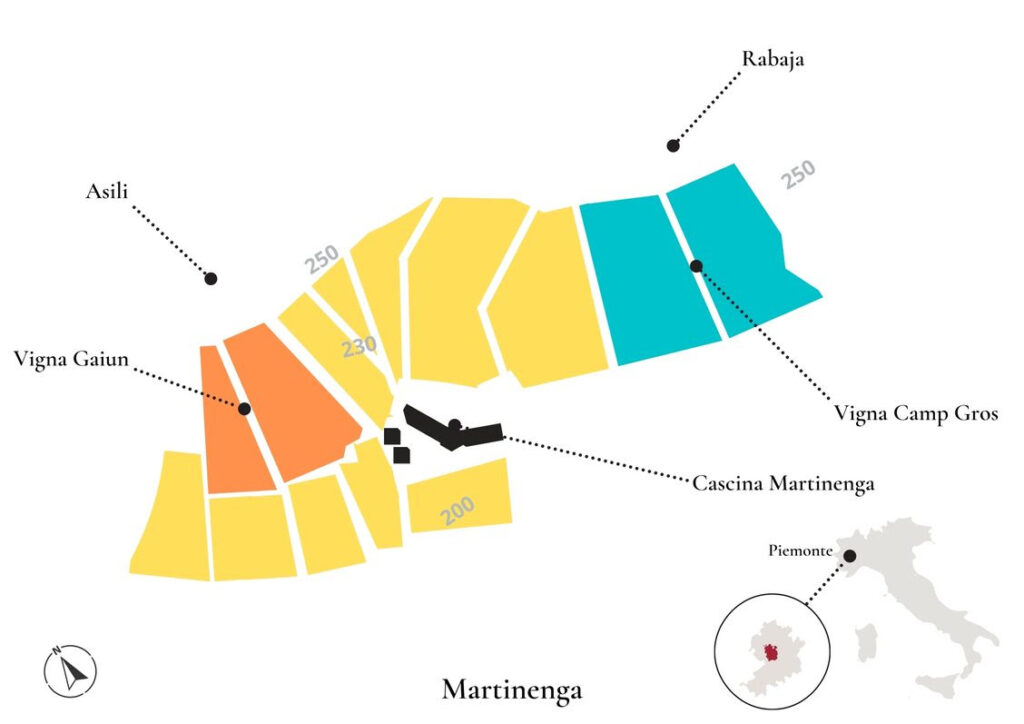
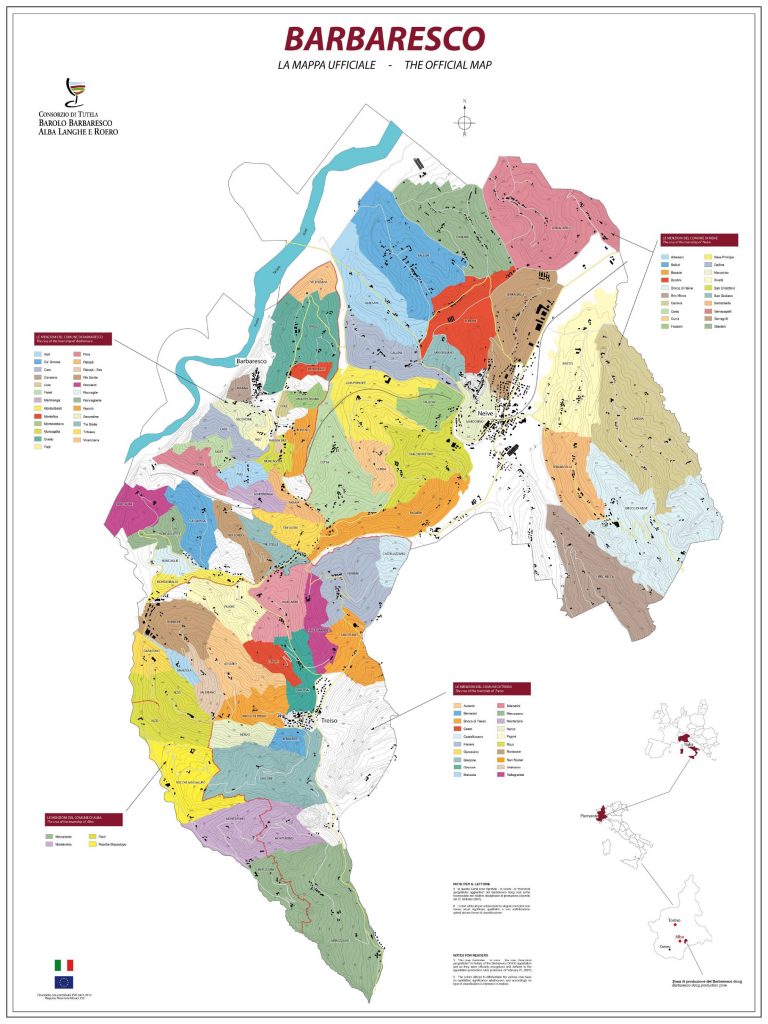
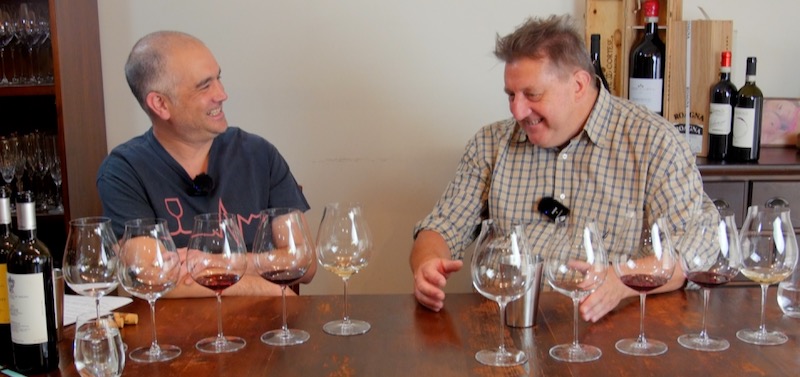
You must be logged in to post a comment.